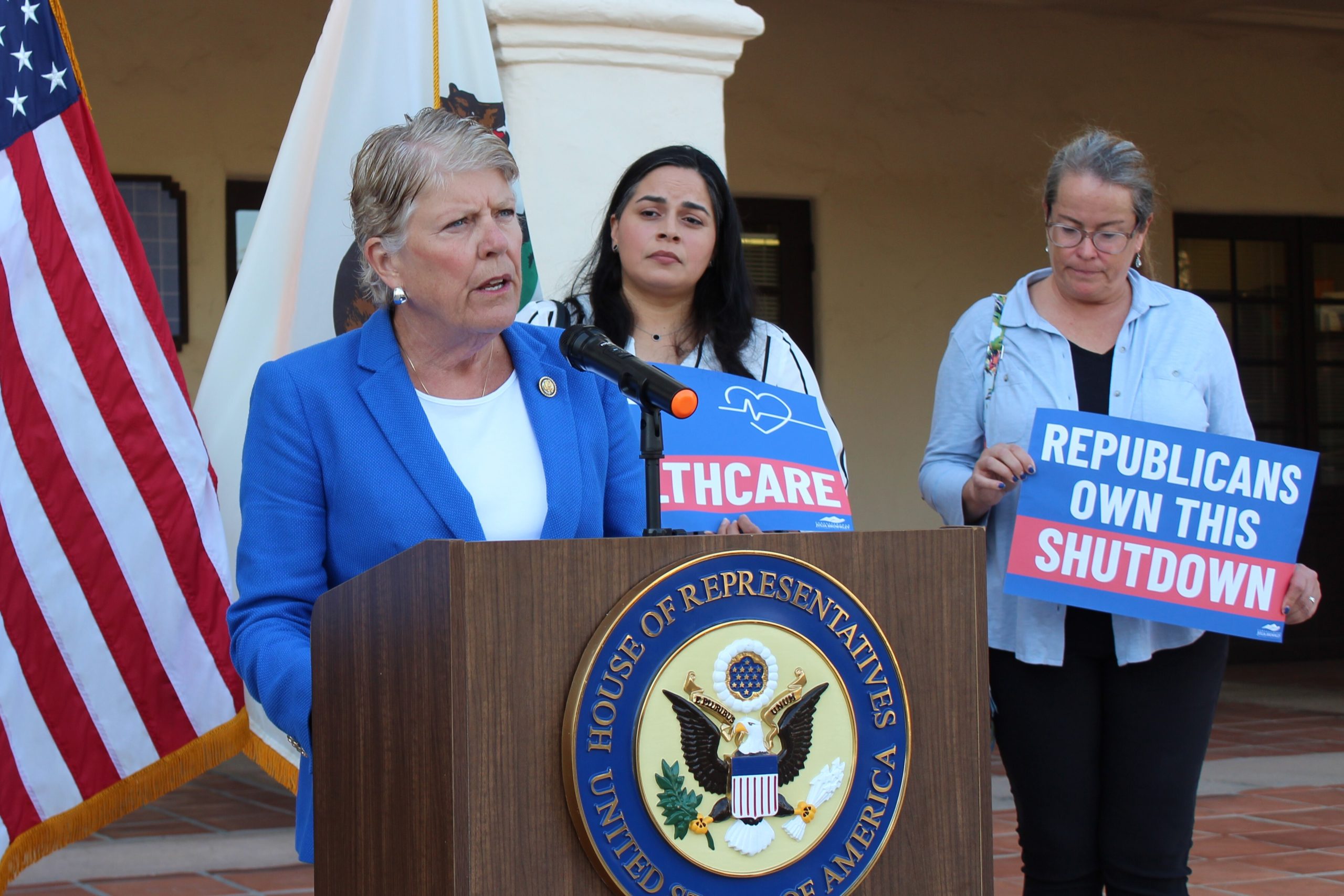Brownley, Ventura County Leaders Call for End to Government Shutdown and Protection of Health Care Access – Congresswoman Julia Brownley (.gov)

Report on the Impact of Government Shutdown on Healthcare and Sustainable Development Goals
Executive Summary
A press conference led by Congresswoman Julia Brownley highlighted the critical intersection of a government shutdown, healthcare accessibility, and the United Nations Sustainable Development Goals (SDGs). The event, featuring local officials and community advocates from Ventura County, underscored how political actions are directly threatening progress on key global objectives, including Good Health and Well-being (SDG 3), No Poverty (SDG 1), Reduced Inequalities (SDG 10), and the promotion of Strong Institutions (SDG 16).
Threats to SDG 3: Good Health and Well-being
The primary focus of the conference was the immediate threat to universal health coverage, a cornerstone of SDG 3. Speakers detailed how the ongoing government shutdown and legislative proposals jeopardize the health security of millions.
- Accessibility and Affordability: Congresswoman Brownley stated that Republican policies and the refusal to reopen the government risk causing millions to lose health coverage or face soaring costs, directly contravening the goal of ensuring healthy lives for all.
- Healthcare as a Human Right: Dr. Felix Nuñez, CEO of Gold Coast Health Plan, reinforced this alignment with SDG 3 by defining healthcare as a basic human right, asserting that no individual should have to choose between their health and other basic needs.
- Impact on Vulnerable Populations: It was noted that over 217,000 residents in California’s 26th Congressional District rely on Medicaid. Proposed cuts could strip coverage from an estimated 34,000 of these individuals, representing a significant setback for health equity.
Socio-Economic Repercussions and Related SDGs
The discussion expanded beyond healthcare to address the broader socio-economic consequences of the shutdown, which undermine several interconnected SDGs.
- SDG 1 (No Poverty) & SDG 10 (Reduced Inequalities): The shutdown exacerbates financial hardship for families already struggling with rising costs for groceries, childcare, and housing. Supervisor Vianey Lopez noted the interconnectedness of systems, where the loss of federal paychecks and benefits like Cal-Fresh pushes more individuals toward poverty and widens the inequality gap. Laura Espinosa, Chair of the Ventura County Medi-Cal Managed Care Commission, warned that the “safety net” that protects the most vulnerable is at risk of unraveling.
- SDG 8 (Decent Work and Economic Growth): The furloughing of federal workers without pay was cited as a direct challenge to the principles of decent work and economic security. This not only affects the individuals and their families but also has a negative ripple effect on local economies, hindering sustainable economic growth.
Call for Institutional Accountability (SDG 16)
The press conference concluded with a strong call for governmental responsibility and the strengthening of public institutions, in line with SDG 16 (Peace, Justice and Strong Institutions).
- Demand for Effective Governance: Congresswoman Brownley characterized the shutdown as a failure of political leadership, urging an immediate end to the impasse to restore government function and serve the public interest.
- Building Accountable Systems: The ultimate goal, as articulated by the Congresswoman, is to build a system that “works for the people, not the powerful.” This reflects the core SDG 16 target of developing effective, accountable, and transparent institutions at all levels. The collective message was a demand for leaders to prioritize human well-being and economic security over political maneuvering.
1. Which SDGs are addressed or connected to the issues highlighted in the article?
-
SDG 3: Good Health and Well-being
The article’s primary focus is on ensuring access to affordable and quality healthcare for all Americans. It discusses the potential loss of health coverage for millions, the rising costs of care, and the importance of programs like the Affordable Care Act and Medicaid (Medi-Cal). This directly aligns with the goal of promoting well-being and ensuring healthy lives.
-
SDG 1: No Poverty
The article connects the healthcare crisis to broader economic struggles. It mentions that families are already dealing with rising costs for groceries, child care, and housing, and that the added burden of high healthcare costs can push them further into poverty. The mention of Cal-Fresh (a food assistance program) and the statement that people should not have to “choose between their health and paying for their other day-to-day needs” explicitly link healthcare access to poverty reduction.
-
SDG 10: Reduced Inequalities
The article addresses the unequal impact of healthcare policies on different segments of the population, particularly vulnerable groups like “veterans, our families, our seniors, and our children.” By framing healthcare as a “basic human right” and not something to be granted based on “worthiness,” the article advocates for reducing inequalities in access to essential services.
-
SDG 16: Peace, Justice and Strong Institutions
The article critiques the failure of governmental institutions due to political conflict. The “government shutdown” is presented as a direct result of institutional failure, where “politics at its worst” prevents leaders from addressing critical public needs like healthcare. The call for “leaders who put them first” is a demand for more effective, accountable, and responsive institutions.
2. What specific targets under those SDGs can be identified based on the article’s content?
-
Under SDG 3: Good Health and Well-being
- Target 3.8: Achieve universal health coverage, including financial risk protection, access to quality essential health-care services and access to safe, effective, quality and affordable essential medicines and vaccines for all.
Explanation: The entire article is a call to action for this target. Phrases like “protect access to affordable health care for millions of Americans,” “ensure that every American has access to the care they need,” and concerns about people watching their “costs soar” directly relate to achieving universal health coverage and financial risk protection.
- Target 3.8: Achieve universal health coverage, including financial risk protection, access to quality essential health-care services and access to safe, effective, quality and affordable essential medicines and vaccines for all.
-
Under SDG 1: No Poverty
- Target 1.3: Implement nationally appropriate social protection systems and measures for all, including floors, and by 2030 achieve substantial coverage of the poor and the vulnerable.
Explanation: The article highlights the importance of social protection systems like Medicaid (Medi-Cal) and Cal-Fresh. The concern that “an estimated 34,000 could lose their coverage under H.R. 1” is a direct reference to the threat against the coverage provided by these systems for vulnerable populations.
- Target 1.3: Implement nationally appropriate social protection systems and measures for all, including floors, and by 2030 achieve substantial coverage of the poor and the vulnerable.
-
Under SDG 10: Reduced Inequalities
- Target 10.3: Ensure equal opportunity and reduce inequalities of outcome, including by eliminating discriminatory laws, policies and practices and promoting appropriate legislation, policies and action in this regard.
Explanation: The political fight described is over policies that affect equality of access to healthcare. The defense of the Affordable Care Act and the opposition to the “House Republican plan that would gut Medicaid” are actions aimed at promoting policies that ensure more equal opportunities for health outcomes, regardless of economic status.
- Target 10.3: Ensure equal opportunity and reduce inequalities of outcome, including by eliminating discriminatory laws, policies and practices and promoting appropriate legislation, policies and action in this regard.
-
Under SDG 16: Peace, Justice and Strong Institutions
- Target 16.6: Develop effective, accountable and transparent institutions at all levels.
Explanation: The article criticizes the ineffectiveness of government due to the shutdown. The statement that Republicans “continue to hold the government hostage instead of addressing the health-care crisis they created” points to a failure of institutions to be effective and accountable to the public’s needs.
- Target 16.6: Develop effective, accountable and transparent institutions at all levels.
3. Are there any indicators mentioned or implied in the article that can be used to measure progress towards the identified targets?
-
Under SDG 3 (Target 3.8)
- Indicator (Implied): Proportion of the population covered by health insurance/essential health services.
Explanation: The article provides specific numbers that can be used as indicators. It states that “More than 217,000 residents in California’s 26th Congressional District rely on Medicaid,” which measures current coverage. The projection that “an estimated 34,000 could lose their coverage” serves as a negative progress indicator, measuring a potential decrease in coverage.
- Indicator (Implied): Proportion of the population covered by health insurance/essential health services.
-
Under SDG 1 (Target 1.3)
- Indicator (Implied): Proportion of the population covered by social protection systems.
Explanation: The figure of “more than 240,000 Medi-Cal members” served by Gold Coast Health Plan in Ventura County is a direct indicator of the number of people covered by a specific social protection program. This data helps measure the reach and scale of such systems.
- Indicator (Implied): Proportion of the population covered by social protection systems.
-
Under SDG 16 (Target 16.6)
- Indicator (Implied): Functionality and operational status of government institutions.
Explanation: The article explicitly mentions the “government shutdown” and notes that “House Republicans are on their fourth week of paid vacation while federal workers are going without pay.” The duration of the shutdown (four weeks) and its consequences (unpaid federal workers) are clear, measurable indicators of institutional failure and ineffectiveness.
- Indicator (Implied): Functionality and operational status of government institutions.
4. Summary Table: SDGs, Targets, and Indicators
| SDGs | Targets | Indicators (Mentioned or Implied in Article) |
|---|---|---|
| SDG 3: Good Health and Well-being | 3.8: Achieve universal health coverage, including financial risk protection and access to quality essential health-care services. | Number of residents relying on Medicaid (217,000); Number of people at risk of losing health coverage (34,000). |
| SDG 1: No Poverty | 1.3: Implement nationally appropriate social protection systems and achieve substantial coverage of the poor and vulnerable. | Number of Medi-Cal members served by Gold Coast Health Plan (240,000); Mention of Cal-Fresh as a key support program. |
| SDG 10: Reduced Inequalities | 10.3: Ensure equal opportunity and reduce inequalities of outcome by promoting appropriate legislation and policies. | Political opposition to policies (H.R. 1) that would “gut Medicaid” and increase inequality in healthcare access. |
| SDG 16: Peace, Justice and Strong Institutions | 16.6: Develop effective, accountable and transparent institutions at all levels. | The existence and duration of the “government shutdown” (four weeks); Federal workers going without pay. |
Source: juliabrownley.house.gov
What is Your Reaction?
 Like
0
Like
0
 Dislike
0
Dislike
0
 Love
0
Love
0
 Funny
0
Funny
0
 Angry
0
Angry
0
 Sad
0
Sad
0
 Wow
0
Wow
0


















































.jpg.webp?itok=0ZsAnae9#)





/environment-climate-change-and-health-(ech)/water-sanitation-hygiene-and-health-(wsh)/landfill-tuvalu-36092.tmb-1200v.jpg?sfvrsn=5c21fe40_1#)


















